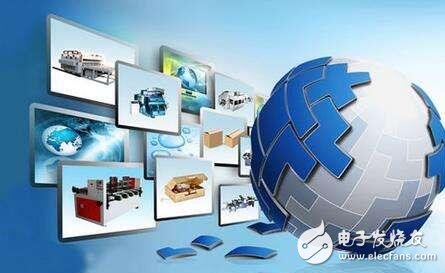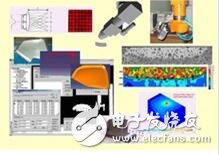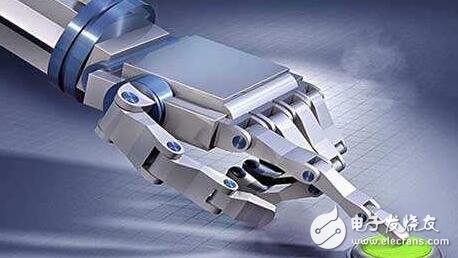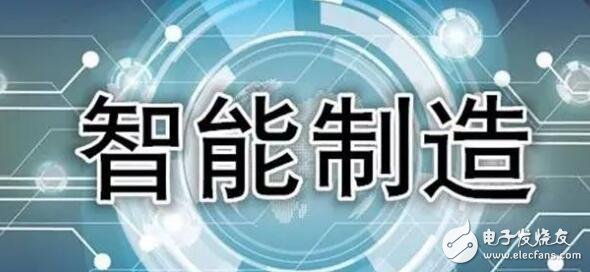In recent years, China's intelligent manufacturing technology and its industrialization have developed rapidly and achieved remarkable results. With the development of technologies such as Internet of Things, cloud computing, and big data, intelligent manufacturing plays a very important role in the transformation of traditional manufacturing enterprises in China. In this article, we will take a closer look at the principles and technologies of intelligent manufacturing and the information that intelligent manufacturing leads the transformation and upgrading.

Intelligent manufacturing principle
The basic principle of intelligent manufacturing starts from the essential characteristics of intelligent manufacturing system. In the distributed manufacturing network environment, according to the basic idea of ​​distributed integration, the theory and method of multi-agent system in distributed artificial intelligence are applied to realize the flexible intelligence of manufacturing unit. Flexible and intelligent integration of network-based manufacturing systems. According to the isomorphic characteristics of the distributed system, based on a local implementation form of the intelligent manufacturing system, the implementation mode of the intelligent manufacturing system in the global manufacturing network environment based on the Internet is also reflected.

The basic concept of distributed network The essential characteristics of intelligent manufacturing system are the “autonomy†of individual manufacturing units and the “self-organization ability†of the whole system. The basic pattern is distributed multi-self-subject intelligent system. Based on this idea, and considering the Internet-based global manufacturing network environment, the basic framework of distributed networked IMS suitable for small and medium-sized enterprise units can be proposed. On the one hand, the agent is given the autonomy by the agent to make it independent and functional. On the other hand, through the cooperation and cooperation between the agents, the self-organization ability of the system is given.
Based on the above framework, combined with the CNC machining system, the development of the distributed networked prototype system can be composed of four nodes: system manager, task planning, design and producer. The system manager node includes two database servers, the database server and the system agent, which are responsible for managing the entire global database, and can be used for querying, reading, storing, and retrieving data of nodes in the prototype system, and for each node. Data exchange and sharing provide a public place, and the system agent is responsible for the interaction between the system and the outside of the system, and the home page of the system is published on the Internet through a web server, and the online user can obtain relevant information of the system by visiting the homepage, and according to himself The requirements are to determine whether the system meets these requirements. The System Agent is also responsible for monitoring the interactions between nodes on the prototype system, such as recording and real-time display of messages sent and received between nodes, and execution of tasks. Wait.
The mission planning node consists of the task manager and its agent (task manager Agent). Its main function is to plan the tasks obtained from the network, break it down into several subtasks, and then assign these tasks by bidding-bidding. Each node. The design node consists of a CAD tool and its agent (Design Agent), which provides a good human-machine interface to enable designers to effectively interact with the computer to complete the design task. CAD tools are used to help designers design products based on user requirements; while Design Agents are responsible for network registration, deregistration, database management, interaction with other nodes, deciding whether to accept design tasks, and submitting tasks to task senders.
The producer node is actually an intelligent manufacturing system (intelligent manufacturing unit) researched and developed by the project, including the machining center and its network agent (machine tool agent). The machining center is equipped with intelligent adaptation. The numerical control system controls the processing process through intelligent controllers to fully utilize the processing potential of automated processing equipment and improve processing efficiency; it has certain self-diagnosis and self-repairing capabilities to improve the reliability and safety of processing equipment operation; The ability to interact with the environment; with an open architecture to support system integration and expansion.
Intelligent manufacturing technology
1. New sensing technology - sensing technology with high sensitivity, accuracy, reliability and environmental adaptability, sensing technology using new principles, new materials and new processes (such as quantum measurement, nano-polymer sensing, Optical fiber sensing, etc., weak sensor signal extraction and processing technology.
2, modular, embedded control system design technology - modular hardware design technology of different structures, micro-core operating system and open system software technology, configuration language and human-machine interface technology, as well as the realization of unified data format, unified programming Environmental engineering software platform technology.
3. Advanced control and optimization technology - multi-level performance evaluation technology for industrial processes, modeling technology based on large data, large-scale high-performance multi-objective optimization technology, large-scale complex equipment system simulation technology, high-order derivative continuous motion planning, electronic transmission Precision motion control technology.
4, system synergy technology - large-scale manufacturing engineering project complex automation system overall program design technology and installation and debugging technology, unified operating interface and engineering tool design technology, unified event sequence and alarm processing technology, integrated asset management technology.
5, fault diagnosis and health maintenance technology - online or remote condition monitoring and fault diagnosis, self-healing regulation and damage intelligent identification and health maintenance technology, major equipment life test and residual life prediction technology, reliability and life assessment technology.
6, high-reliability real-time communication network technology - embedded Internet technology, high-reliability wireless communication network construction technology, industrial communication network information security technology and heterogeneous communication network information seamless exchange technology.
7, functional safety technology - intelligent equipment hardware, software functional safety analysis, design, verification technology and methods, establish a functional safety verification test platform, research automation control system overall functional safety assessment technology.
8, special technology and precision manufacturing technology - multi-dimensional precision machining technology, precision molding process, welding, bonding, sintering and other special joining processes, micro-electromechanical systems (MEMS) technology, precision controllable heat treatment technology, precision forging technology.
9, identification technology - low-cost, low-power RFID chip design and manufacturing technology, ultra-high frequency and microwave antenna design technology, low-temperature hot-press packaging technology, UHF RFID core module design and manufacturing technology, based on deep three-dimensional image recognition technology , object defect recognition technology.

1. The automobile industry leads the development banner of intelligent manufacturing
At the "Sanya Finance and Economics International Forum" held on December 10th, Zuo Shiquan, director of the Equipment Industry Research Institute of the CCID Research Institute of the Ministry of Industry and Information Technology, pointed out that we should objectively understand Industry 4.0, or smart manufacturing. The large-scale standardized mass production method at the 3.0 stage has not changed, and only a way to achieve mass customization is the new industrial revolution. Intelligent manufacturing itself should be an ecosystem. From product to production to service, German Industry 4.0 is more intelligent production.
He also said that automotive products are moving in the direction of Smart Terminals, not only to solve travel problems, but also a complex terminal. Through pilot demonstrations, we can improve our laws and regulations and create a good development environment to promote the development of smart cars. In the end, we will establish an ecosystem of intelligent networked vehicles. The automotive industry will surely be the leading industry for intelligent manufacturing.
2, technology hollowing out is the battery to achieve the wisdom of the roadblock
At the third exchange meeting of the "Power Battery Technology Upgrade and Industry Chain Research" special topic held on December 5th, the industry agreed that power battery technology and equipment companies should take high-end and international routes and develop large-scale intelligent manufacturing. The road map, research on manufacturing processes, methods and standards, beware of the "technical hollowing out" of power battery manufacturing.
Industry experts also said that in addition to the leading enterprises in the development of power lithium batteries, we must also focus on building leading enterprises in production equipment, and increase support for leading enterprises in technological transformation, research and development and innovation. The government can provide support in terms of policies and regulations, financing channels, and subsidies for special funds. Enterprises should increase investment in research and development, take an international route, and quickly learn from the experience of advanced foreign companies. Of course, it is not to copy and copy, or to adhere to independent research and development, to master independent intellectual property rights, to promote the technological advancement and improvement of front-end equipment in the middle and back end.

3. The home appliance industry accelerates the industrialization process of intelligent manufacturing
Intelligent manufacturing is a breakthrough for China to catch up with developed countries, and home appliance companies are accelerating on this road. With the development of technologies such as Internet of Things, cloud computing, and big data, smart factories play a very important role in the transformation of China's home appliance manufacturing enterprises. The most typical representatives are Haier's "Connected Factory" and Midea's "Smart Factory", which subvert the traditional manufacturing system and explain the concept of the home appliance industry 4.0. After the intelligent operation, the overall efficiency of the two companies' factories has increased by more than 30%, and the number of personnel has dropped from more than 800 to more than 500. And compared to the manual analysis of the traditional manufacturing model, intelligent manufacturing can monitor in real time and adjust itself according to information feedback.
At present, Haier has transformed from a traditional large-scale manufacturing enterprise into a platform-based enterprise with “user experience as the centerâ€. In contrast, Midea's smart factory is also using the Internet of Things, big data technology, but the United States seems to care more about the "single point of the extreme" of the entire factory. In general, China's manufacturing industry has shifted from a traditional manufacturing model to a smart manufacturing. For the country, this is China's choice to promote supply-side structural reforms in order to win the future of China's manufacturing industry in an increasingly competitive global environment.
4, the new energy car into a smart manufacturing rising star
At present, China's new energy vehicle manufacturing is more prosperous than ever before, and the transformational effects brought by new energy vehicles to the automobile manufacturing industry are increasingly apparent. Under the background of the national “Industrial Manufacturing 2025†and “Industry 4.0†and other guiding strategies, intelligent manufacturing will become the future trend of new energy production and manufacturing.
In addition, the transformation of the role of the new energy industry chain participants in the industry due to the trend of intelligent manufacturing is also worthy of attention. This means that in the new energy vehicle industry chain, component companies not only transform to integrated solution providers, but also assume the role of operators. The consumption of new energy vehicles is in the environment of upgrading automobile consumption. The post-80s and post-90s populations have become the main force. Personalization and customization have become the new trend of new energy vehicle consumption, and this has proposed new energy vehicle production. new challenge.

Interactive Kiosk,Interactive Kiosk Software,Interactive Touch Screen Kiosk,Interactive Wayfinding Kiosk
Guangzhou Winson Information Technology Co., Ltd. , https://www.barcodescanner-2d.com